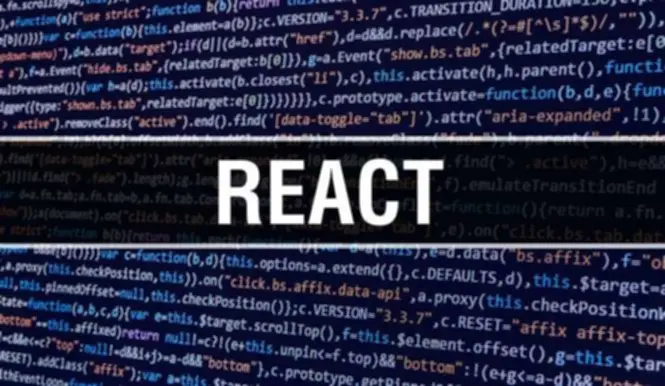Every month, an adjusting entry realizes the portion spent as an expense with a corresponding credit score to the pay as you go expense account. You record prepaid bills as property on the company’s balance sheet at the time of payment. Over time, as the corporate consumes the benefit, you’ll switch a portion from the pay as you go account to the corresponding expense account in the income assertion.
By the tip of six months, the prepaid steadiness is absolutely expensed, precisely reflecting the promoting costs incurred. This course of follows the matching principle, making certain that bills are acknowledged in the same interval because the revenue they help generate. Proper allocation prevents financial misstatements and provides a more correct image of a company’s profitability and finance. This post delves into pay as you go bills, offering a transparent understanding of their mechanisms, significance, advantages, potential drawbacks, and even different choices. This publish delves into pay as you go expenses, offering a clear understanding of their mechanisms, significance, benefits, potential drawbacks, and alternate options.
Prepaid Bills check with payments made upfront for products or services expected to be received on a later date, most frequently related to utilities, insurance coverage, and rent. Features like PINs, transaction locks, and zero-liability insurance policies, as noted by Investopedia, shield against unauthorized use. For occasion, you accrue utility payments throughout the month, recording the estimated value as a legal responsibility https://www.globalcloudteam.com/ till the billing cycle ends. Pay As You Go playing cards additionally work for annual hire or insurance coverage, ensuring funds are allotted specifically for these prices, simplifying budgeting and avoiding overspending.
Prepaid playing cards assist by offering clear transaction records, making it easier to align prepayments with amortization schedules. You must amortize pay as you go prices, like hire, over their profit interval, whereas monitoring accrued liabilities, such as unpaid wages, to ensure timely recognition. By tracking these liabilities, you preserve transparency in your financials, which is significant for stakeholders or lenders. Whether Or Not you’re operating a business or managing private funds, recognizing accrued expenses retains your information accurate and your obligations in check, preventing cash move missteps. Grasping the prepaid expenses vs accrued expenses distinction helps you maintain correct financial statements and keep away from compliance points.
Regular reconciliation ensures your software development terms displays actual card balances and excellent obligations. As A Substitute, the worth of the nice or service have to be acknowledged over time because the business realizes the profit. In the insurance instance, the service offered to the enterprise is legal responsibility policy protection.

The capital used for prepayments isn’t available for other probably lucrative investments or necessary operational prices. As the benefits of those pay as you go bills are realized over time, they are progressively expensed within the earnings statement. Usually, the amount of prepaid JavaScript bills that will be used up within one year are reported on a company’s stability sheet as a present asset. As the amount expires, the current asset is decreased and the quantity of the reduction is reported as an expense on the revenue statement.
These playing cards also offer real-time expense monitoring and budgeting tools, serving to you monitor the place and the way your small business is spending in advance. They’re particularly helpful for managing subscriptions, travel bookings, or vendor funds. Integrating prepaid card transactions with accounting software like QuickBooks streamlines pay as you go expense tracking.
- Each of these accounts are asset accounts, and the entire transaction impacts the steadiness sheet solely.
- One frequent example of an early prepayment is insurance coverage protection, usually paid upfront to cowl multiple future durations.
- These expense varieties apply in distinct eventualities, with pay as you go cards streamlining prepayments.
- The “Prepaid Expenses” line merchandise is recorded in the current belongings section of the balance sheet.
Continue the cycle of steps one via four until the business totally realizes the profit it purchased. You’ll know you’ve reached this point when the balance of the prepaid asset account equals $0. Start by calculating the portion of the prepaid expense that applies to a particular period. To do that, divide the total prepaid quantity by the number of amortization periods. Prepaid expenses can cover any services or products that gives a continual benefit over time, but many relate to purchases a business must make in advance.
Example Journal Entry For Prepaid Lease
A best practice is to not report smaller expenditures into the pay as you go bills account, since it takes an extreme amount of effort to track them over time. To lengthen this idea further, contemplate charging remaining balances to expense as soon as they’ve been amortized all the method down to a sure minimum degree. Both of these actions should be ruled by a proper accounting policy that states the edge at which prepaid bills are to be charged to expense. Later, when the pay as you go expense is used, a company records an expense for the services or products which is a debit, and the prepaid expense gets canceled out through a credit score.
Initial Journal Entry:
Beneath, we discover these hurdles and offer solutions, highlighting how prepaid cards can simplify the method. This elementary timing difference—pay now versus pay later—shapes how each impacts your financial planning and obligations. You may need to set up an amortization table to track the lower within the account over the coverage term and to discover out what the journal entries might be.
Accident insurance coverage premiums, for example, should be bought earlier than something goes wrong. These are thought of property on the balance sheet because they represent amounts that will be used up or expire in the future. In contrast, accrued bills are costs incurred by a company but not but paid for, sometimes due to the absence of an bill (i.e. waiting on the bill). A company’s prepaid expenses are normally minuscule in relative size and infrequently have a significant impression on its valuation. Subsequently, the expense is often aggregated with the “Other Current Assets” line.

When you incur costs for items or companies however haven’t paid for them but, you’re coping with accrued bills. These include things like utilities, salaries, or interest that you’ve used or owe but haven’t settled by the tip of your accounting interval. Underneath the accrual method of accounting, revenue is recognized when it’s earned, and bills are recognized when incurred, no matter when cash exchanges palms for the transaction. Prepaid expenses are an asset because the business has not realized the worth of the great or service when cash initially exchanges arms. When the quantity of a prepaid expense is immaterial, the accountant could choose to instantly cost it to expense. Doing so is more environment friendly than initially recording it as an asset and then charging it to expense with a quantity of journal entries over a time frame.

Once you understand the profit, you shift the quantity to the earnings assertion as an expense. A business pays $18,000 in December for liability insurance covering January by way of December of the next 12 months. When the business purchases the insurance coverage in December, it information an $18,000 debit to pay as you go expense, which is an asset account. It simultaneously information an $18,000 credit to cash, which is also an asset account. This is an instance of a steadiness sheet transaction because it does not involve any income or expense accounts that seem on the revenue assertion. A prepaid expense is an expenditure that’s paid for in one accounting interval, however for which the underlying asset is not going to be totally consumed until a future period.



 Come sempre in anticipo sulla normativa,
Come sempre in anticipo sulla normativa, 
 Le nuove proposte immobiliari di
Le nuove proposte immobiliari di 
